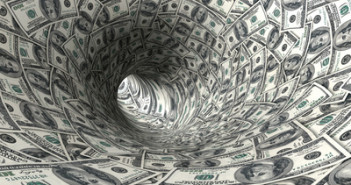No surprises from the Federal Reserve: the tapered by $10 as expected. It maintained the “considerable†word. However, the Fed fears less about inflation. It also changed the wording on employment, saying there is still a “significant underutilization of labor resources“. All in all, the Fed maintained the dovish stance with a very minor shift to the hawkish side. Yet without a change in rate hike expectations, we are seeing the much desired dollar correction.
The Federal Reserve was widely expected to taper bond buys for the 6th time by $10 billion to $25 billion per month. The statement was expected to be slightly more hawkish, in light of the recent improvement in the US economy. The Fed is on a preset course and has signaled it will end QE altogether in October. This Fed decision is not accompanied by economic forecasts nor a press conference. This makes every word in the statement important, especially the word “considerableâ€.
Update: you can see coverage videos here.
Here are key parts from the statement:
Inflation has moved somewhat closer to the Committee’s longer-run objective. Longer-term inflation expectations have remained stable
There was one dissenter, Charles Plosser. Here is his explanation:
objected to the guidance indicating that it likely will be appropriate to maintain the current target range for the federal funds rate for “a considerable time after the asset purchase program ends,†because such language is time dependent and does not reflect the considerable economic progress that has been made toward the Committee’s goals
The dollar was steaming ahead today due to the excellent GDP report and heightened expectations towards the decision. EUR/USD traded under 1.34, GBP/USD struggled with 1.69 and USD/JPY got close to 103. The dollar is weakening after the publication, with EUR/USD ticking above 1.34, GBP/USD settling above 1.69 and USD/JPY backing from the 103 level.
AUD/USD was basically saved from losing 0.93
Dollar bulls certainly had reasons to be cheerful, with strong employment figures (also in the Fed fave JOLTS) and the 4% annual growth rate in Q2 reported today. However, the Fed is very cautious and Yellen is very dovish. So, the market may have gone ahead of itself with these expectations.
The markets currently expect the Fed to start raising rates in mid 2015. Some had speculated that the Fed may remove the word “considerable†that refers to the period of time between the end of QE to the first rate hike, but this seems to be the extreme hawkish end of predictions.
The Fed began tapering in December 2013 when it cut Quantitative Easing from $85 to $75 billion in monthly buys.
For a deeper analysis, here is our latest podcast about inflation:



